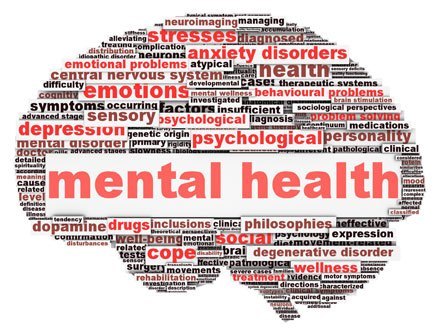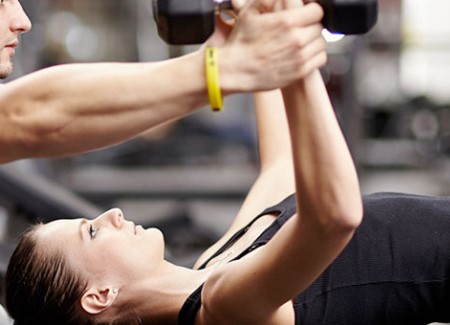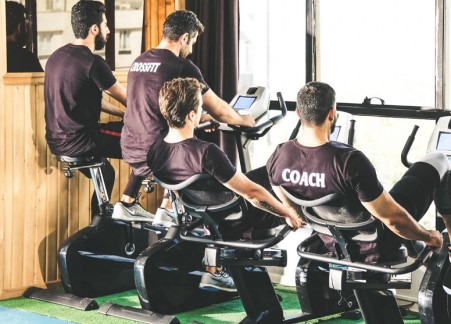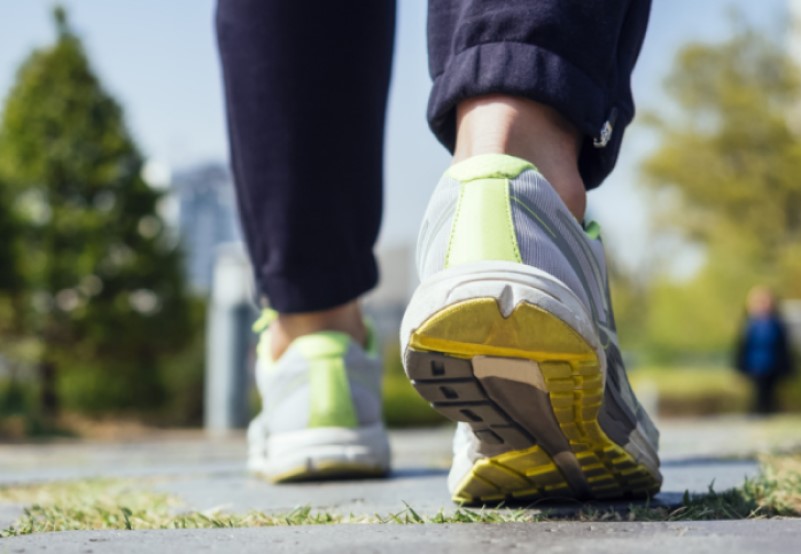How Exercise helps on dealing with Mental Illness
Table of Contents
The exercise not only provides benefits on the body health (treatment of serious diseases such as obesity, diabetes, various neurological diseases, high cholesterol, brain diseases, cardiovascular diseases, muscle aches, or osteoporosis, cancer, aging, prevention of other chronic diseases). It also benefits the look and beauty (weight loss, avoiding the yo-yo effect, fighting cellulite, tightening the body, increasing muscle mass, muscle ribbing and anti-aging of the skin).
Regular and consistent physical exercise has – according to experts – amazing benefits in terms of the individual’s mental health.
According to valid studies, exercise can:
- fight depression
- mood improvement
- reduction of stress and anxiety
- sleep improvement
- self-confidence boost
“Mental Health” – What it is and what it’s meaning

It sounds quite strange but no clear definition of “mental health” is available anywhere.
In fact, it is common to define the concept of mental health via the formulation of various mental disorders, illnesses and problematic situations, perhaps for mental health meaning something different from person to person, or because the goals set by everyone – for a calm and mentally balanced life – are different.
A typical example is the difference in the treatment of mental health issues depending on the geographical and climatic image of a place, as well as the cultural elements and culture of a person, or even because a mental illness is not as “tangible” as a physical one.
Many – even today – tend to under-estimate mental problems, ignoring the “signs” when “lost” into a mental darkness.
Nowadays it is easy to perceive a dramatic elevation of mental problems and disorders for a majority of people of all age groups.
In any case, what we mean by “mental health problems”?
- thought disorders
- psychosomatic reactions
- emotional disorders
A person may experience one of the above problems or even a combination of them, with depression being one of the most common problems faced today.
According to statistical studies, about 300,000,000 people (of all ages) around the world experience depression, while it is worth noting that depression seems to have a “preference” in women over men.
It is important to point out that; a specialist treats mental health problems (as physical health problems) promptly and responsibly.
Unfortunately – for many – mental illness and psychotherapy considered as a taboo, result to problems becoming chronic and even more intractable.
A positive point, however, is the development of the internet as a means of informing the public in relation to mental illness (and in achievement of mental and physical balance as well).
The information assists in fighting the taboos, preventing early situations potentially deteriorating over time and not applying the appropriate treatment (as prescribed by the competent doctor: psychologist / psychotherapist or psychiatrist).
Nevertheless, every situation is different.
It is not possible for a person to diagnose its condition in a safe way. Special knowledge and clear thinking are required (without personal involvement) for achieving a correct diagnosis, appropriate treatment process and treatment of the existing problem.
For the mental health problems the examination and diagnosis by a specialist psychologist / psychiatrist, is recommended.
Mental Therapy – Types
As man advances and opens his horizons, and science constantly crosses new paths, new techniques and types of treatment are discovered and applied to tackle the scourge of mental illness.
The goal is (and should be) to address – not only – the problem itself, but also the cause led to its occurrence.
The specialist will judge the method of treatment necessary to follow, after a detailed examination of the patient.
Below see a number of the most popular methods of mental therapy and treatment of the disease and its cause:
- psychotherapy
- psychological support and guidance (life coaching)
- medication (usually accompanied by psychotherapy)
- non-interventional psychotherapy (EMDR / Eye Movement Desensitization and Reprocessing)
- acupuncture (usually accompanied by psychotherapy)
- homeopathy (usually accompanied by psychotherapy)
- Neuro-Linguistic Programming (NLP)
- administration of nutritional supplements (when dysfunction is a result of nutritional deficiency)
How is Physical Exercise involved as a Method on Dealing with Mental Illness?

As physical wellness affects the overall health of the individual in a positive way, it also has a positive effect on its mental health in particular.
Likewise, “mental strain” has an obvious impact on the individual’s physical image and function.
It is no coincidence that mental health science often referrers to “psychosomatic diseases” and mental states manifesting via physical reactions.
A typical example of a psychosomatic condition broadly known and understood – as many rush to refute the existence of mental and body connection – is the occurrence of a heart attack or stroke after a severe mental shock, a strong anxiety attack or an emotionally painful condition.
According to experts, mental problems activate most of physical ailments.
The term “psychosomatic disease” is valid (according to medical science) expressing the manifestation of organic / pathological conditions stemming from mental disorders or emotional involvement.
One such emotional involvement faced by the majority of the modern world is stress, as huge increase in mental illness and psychosomatic disorders manifested over the years.
As stress increases, the body reacts to this “pressure” with the manifestation of physical dysfunctions (often tending to be misinterpreted and attributed to irrelevant situations).
The reason leading to these bodily reactions is usually the hormonal changes taking place in the body during the phase of a strong and aggravating mental state.
Therefore, for example, intense stress or strong sadness, leads the body to secrete various hormones eventually – and as long as the condition not treated properly – leading to chronic changes in the body’s function.
What about exercise? How can exercise help?
While negative emotions (such as stress and anxiety) lead the body to produce “negative” hormones, physical exercise pushes the body to produce “positive” hormones – also known as “happiness hormones”.
Nevertheless, this is not everything.
Exercise (in any form and at any intensity applied when applied) can bring significant benefits to the physical and mental health of the individual.
Psychosomatic Reactions and Physical Exercise Benefits
It would be useful to look at the main (and most common) psychosomatic reactions of the organism, the signs sent by our organism, as warnings of mental problems.
- Hormonal Changes
As mentioned above, intense emotional states lead the organism to secrete specific hormones, causing hormonal imbalance and significant hormonal changes.
Some hormones showing a sharp increase in the treatment of a traumatic mental condition are cortisol, adrenaline, noradrenaline, norepinephrine, adrenocorticotropic hormone and catecholamines.
- Behavioral Changes
As a mental illness affects via the hormonal changes taking place in the organism, the brain’s biochemistry and function, the person suffering tends to show strong behavioral changes as finds it difficult to understand the situation and the changes in its behavior.
The problem is usually perceived by the patient’s immediate environment (family, friends, relationship), called upon to encourage the person to visit a specialist.
- Physical Changes
Physical changes – and as the case may be – include a variety of situations, ranging from tachycardia, dry mouth, gastrointestinal disorders, sweating, tremor, difficulty swallowing, visual and general sensory disturbances, to high blood pressure, headache, shortness of breath, sleep apnea, skin disorders, triathlon, physical pain, various forms of cancer, diseases of the immune system (also known as “autoimmune diseases”), obesity and eating disorders.
As immediately perceived, the range of organic psychosomatic reactions is huge.
Each patient may experience individual symptoms or a combination of many of the above.
However, the “common” manifestation of these symptoms in a variety of pathological conditions significantly complicates the diagnosis of a psychosomatic illness.
At this point, we should refer to physical exercise as a means of preventing and fighting the mental illness and promoting the individual’s mental balance.
According to mental health experts, physical activity is a key “weapon” for the prevention of psychosomatic diseases.
The contribution of exercise to the enhancement of mental health scientifically documented now with relevant studies proves its power (often proved almost equal to that of psychotherapy).
The ancient Greeks with the phrase “a sound mind in a healthy body” have described the absolute correlation of the healthy organism and healthy mind (and soul) since antiquity.
The use of physical exercise as a method / form of psychotherapy dates back to the 19th century, in major psychiatric hospitals of the time.
Now, in every psychiatric hospital, physical exercise is officially included as a method of treatment of the person involved and as a treatment program.
Physical activity can significantly improve the quality of daily life of a mentally ill person and prevent the occurrence of mental illness in healthy people.
Exercise works in the body as a “stimulus”, by promoting musculoskeletal development, cardiovascular and brain health, normal neurological function, and certainly mental balance.
Yes or no to Resistance Training and why?

Resistance is a type of training extremely popular and easily performed even at home, by people of limited to no exercise experience and by persons very fit aiming at great muscle gains, muscle ribbing and body volume.
As a type of training, it can be of a smooth to very dynamic and demanding form.
In fact, it provides spectacular benefits to the body – muscle stimulation, bone strengthening and reduction of adipose tissue – in a short period indeed.
As science has shown, such training can ensure both your physical and mental health, recommended by both physicians and mental health doctors.
Many – following proper medical guidance – use resistance training to heal injuries (such as world-renowned athletes around the world or people severely injured in accidents).
The intensity of the training, the number of repetitions and sets, the pause time between repetitions, and the total time of the entire training (along with the warm-up and the recovery of muscles), are determined according to final goal and each individual’s physical condition.
A satisfactory training frequency (for beginners) is three (3) times a week.
However, such a workout, properly performed from home (and for delivering the desired physical benefits), requires proper organization.
Below we see the points requiring your attention (especially if you exercise alone at home, without the guidance of a personal trainer or trainer).
- Appropriate “Tools”
Proper resistance training requires obviously resistance.
By “resistance”, however, we mean a series of “tools”, which with the weight and resistance created promote a series of muscle contractions in the body (when applied correctly).
Among these tools are dumbbells, tires, various machines, ropes, kettle bells, and any tool / organ causing this muscular effort in the body.
Another tool included in the resistance training is your own body.
The body – with its weight – may be used in a series of specially designed exercises for creating intense muscle stimulation, increasing endurance, increasing strength and – certainly – ribbing and volume.
- Training intensity level
As already pointed out, the level of training’s intensity is determined by the person, its “skills” (coaching) and the goals set (rehabilitation, weight loss, strengthening, muscle mass, endurance, psychological relaxation, physical & mental balance).
However – and regardless of each person’s physical condition or even its goal – for a training to have serious effect (benefit), the person must use a large percentage of its strength and not perform the training in a relaxed state.
In fact, according to experts (coaches and personal trainers), to increase muscle strength, training should be done at 85 to 100% of the athlete’s strength, while to increase muscle mass to 55 to 85% respectively.
- Number of sets and repetitions
Another parameter determined by the individual athlete is the duration of the training, generally and specifically.
In other words, the individual (depending on its physical ability and the goals to achieve), will determine the total duration of a workout (along with the time of warming up the muscles and their recovery / recovery after its completion).
In addition, the individual (again depending on its physical abilities) adjusts the number of sets of exercises and the number of repetitions of each set of exercises.
Finally, the individual – and depending on the degree of difficulty desired to achieve in its training – determines the pause time between sets.
A good start to achieve muscle strength is six (6) repetitions in each set, while for muscle mass it is from 10 to 25 repetitions / set.
The number of sets performed again varies depending on the physical condition of each person and determined by the muscle group in training each time.
Isotonic, Isometric or Isokinetic Resistance Training? Which is the ideal?

Resistance training may have different applications and, for this reason, comes into three (3) different categories: isotonic, isometric and isokinetic resistance training.
Here are the differences between these three (3) different types of resistance training and their application.
-
Isotonic resistance training
Isotonic training refers to a predetermined and controlled muscle contraction performed with the help of resistance.
A workout completed in just 30 minutes and two (2) workouts a week, considered as sufficient to see real physical benefits, as well as mental.
The form of this controlled exercise helps in bone strengthening as well as in rapid muscle strengthening.
Isotonic resistance exercise involves the presence of joint movement in a sequence of positions.
A complete 30-minute isotonic training program should always be created according to the athlete.
However, if you do not have the opportunity to follow a program with a trainer or personal trainer, you can create (empirically) a safe (and with no exaggeration) set of exercises according to your capabilities.
-
Isometric resistance training
Isometric training – though many confuse it with isotonic – is another – type of training, also very beneficial for the individual’s physical and mental health.
Its benefits are huge, relating to muscle strengthening, strengthening and development of physical endurance.
It is the most basic and simple form of resistance training, referring to achieving muscle contractions by moving the muscles from a fixed point (such as push-ups with resistance to body’s weight and a fixed point of reference on the ground).
Unlike isotonic training, isometric training does not involve movement of the muscles and joints nor does it change the length of the muscle.
The muscles – following the application of the exercises – do contract, maintaining their length throughout the training process.
This workout is suitable for stimulating muscle strength, while being popular, as it does not require extra equipment (training tools).
In isometric training, the fixed point of reference can be the floor, a wall, a chair or generally any solid object.
-
Isokinetic resistance training
Finally, another form of resistance training is isokinetic training, involving a certain range of motion of the muscles performed at a constant angular velocity throughout the workout.
In the application of these exercises, the speed at which the movement performed is extremely important and not the resistance applied.
This exercise usually performed on special machines in gyms allowing the movement of the muscle with a predetermined resistance. The goal is to achieve the exercises at a predetermined (and constant!) speed until the end of the training.
Selection of Training relating to Physical Benefits
The choice of training tactics relates to the athletic abilities of the individual, as well as the desired result.
Choice of Training relating to Mental Benefits
As isotonic exercise increases the production of mechanical work by the body, the physical stimulation offers great satisfaction and mental uplift.
In addition, in isotonic training, changes in individual’s physique and body image (muscle strengthening and rebuilding, reduction in body fat, ribbing, vascularity) are obvious, giving the person great confidence.
On the other hand, weight lifting (an example of isometric training) also offers significant physical and mental benefits, with less range of motion and smaller effort (certainly depending on the size of the weight used as resistance).
The person who is less tired during training (as this is not an aerobic exercise), enjoys significant physical benefits giving a high degree of confidence and mental uplift.
Finally, isokinetic training provides huge physical and mental benefits, requiring however, the appropriate equipment of special machines to achieve it.
Conclusion
The choice of exercise should be made according to the capabilities of the person (sports, financial, time), as well as according to its preferences and the goal desired to be achieved.
A few final words on the relationship between exercise and mental health
Exercise is a source of life, a tool for maintaining good health, and a credential for longevity / wellness / beauty / mental wellness.
As the incidence of mental disorders is extremely high in today’s society and era, the role of physical exercise in the daily life of modern man is becoming more and more necessary and imperative.
The contribution of exercise in achieving and maintaining physical and mental health is already scientifically proved.
All specialist mental health clinics, as well as mental health specialists, unreservedly recommend physical exercise (regardless of the type) as a method of treatment.
Especially in the case of anxiety disorders, there are numerous scientific studies confirming the positive effect of physical activity in fighting stress in the individual’s daily life, as well as in increasing his ability to cope with it.
The same applies in the case of depression. Exercise (and especially the aerobic form) is ideal for the secretion of so-called “happiness hormones” helping to fight depression.
The emotional benefits enjoyed by each person from incorporating regular physical exercise into their weekly routine three (3) to four (4) times a week are as important as the physical ones.
It is no coincidence indeed, that many scientists now consider the psychic benefits of exercise to be similar to those of psychotherapy (individually or in groups).

